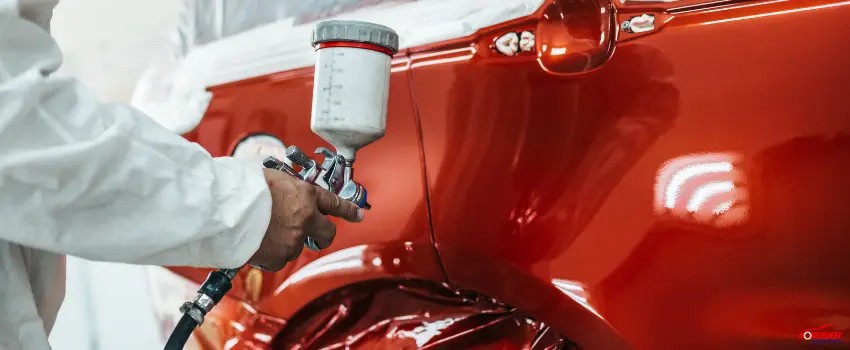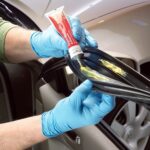Classic cars evoke images of gleaming chrome and meticulously maintained bodies, symbols of a bygone era of automotive artistry. However, beneath the polished surface, a silent enemy often lurks: rust. This pervasive issue can significantly diminish the beauty and value of classic vehicles, attacking their vulnerable and often intricate components. Understanding how to repair rust is crucial for any classic car owner dedicated to preserving their prized possession and ensuring its longevity.
What Defines a Classic Car?
While the allure of a classic car is universally recognized, the exact definition can vary. Generally, a classic car is an older automobile with historical interest and collectible value. Organizations like the Classic Car Club of America specify cars built between 1925 and 1948 as definitive “classics.” However, a broader understanding often includes any vehicle at least 20 years old with unique design, rarity, or historical significance that appeals to collectors.
The criteria for classic car insurance further emphasize originality. Maintaining the car’s original design is paramount. Restoration work must adhere to the vehicle’s original specifications, utilizing authentic materials for both interior and exterior elements. Modern accessories are typically prohibited, underscoring the importance of preserving the car’s period-correct authenticity.
Understanding the Types of Car Rust
Rust, a form of corrosion, occurs when iron or steel reacts with oxygen and moisture, a common electrochemical process. In automobiles, particularly those with steel bodies, rust is a persistent threat. Recognizing the different types of rust is the first step in effective repair and restoration.
1. Surface Rust: The Initial Stage
Surface rust is the most superficial type, appearing as a reddish-brown discoloration on the metal’s surface. It’s often caused by minor scratches or chips in the paint that expose the underlying metal to the elements. Fortunately, surface rust is usually the easiest to address. It can typically be removed with abrasive tools like sandpaper, wire brushes, or chemical rust removers, making it a manageable part of classic car maintenance.
2. Scale Rust: Progression and Deeper Damage
If surface rust is left untreated, it evolves into scale rust. This more advanced stage is characterized by thicker, flakier layers of corrosion building up on the metal. Scale rust signifies that the corrosion has penetrated deeper than the surface. Removing scale rust requires more aggressive methods, such as grinders or sandblasters, to effectively strip away the thicker rust layers and prepare the metal for restoration.
3. Penetrating Rust: Structural Threat
Penetrating rust represents the most severe form of automotive corrosion. It occurs when rust eats deeply into the metal, compromising its structural integrity. This type of rust can weaken crucial car components, leading to significant damage and safety concerns. Repairing penetrating rust often necessitates cutting out and replacing the affected metal sections with new, rust-free panels. In cases of extensive penetrating rust, professional intervention is usually essential to ensure structural safety and proper repair.
Step-by-Step Guide to Repairing Rust on Your Classic Car
Restoring a classic car and tackling rust requires a meticulous approach. While professional auto body repair shops are often recommended for extensive rust damage, understanding the process empowers classic car owners to handle minor rust issues and appreciate the work involved in professional restoration. Here’s a step-by-step guide for addressing rust on your classic car:
1. Gather the Necessary Supplies
Before starting any rust repair, assemble all the required tools and materials. Typical supplies include:
- Safety Gear: Gloves and goggles to protect yourself during the process.
- Cleaning Supplies: Degreaser or car soap and water for cleaning the work area.
- Abrasive Tools: Sandpaper (various grits, from coarse to fine), wire brushes (various types, including rotary brushes for drills), and scouring pads for removing rust.
- Rust Removal Tools (for Scale Rust): Grinder or sandblaster for more aggressive rust removal.
- Rust Remover Solution: Chemical rust removers to treat remaining rust.
- Application Tools: Brushes or cloths for applying rust remover and primer.
- Rinsing Supplies: Clean water and cloths for rinsing.
- Primer and Paint: Rust-inhibiting primer and automotive paint matching your car’s color code for protection and finishing.
2. Thoroughly Assess the Rust Damage
Carefully inspect your classic car to identify all areas affected by rust. Determine the type and extent of the rust damage in each location. This assessment will help you plan your repair strategy and estimate the time and resources needed for the rust removal process. Pay close attention to common rust-prone areas like wheel wells, rocker panels, and lower body panels.
3. Clean the Area Around the Rust
Begin by cleaning the areas surrounding the rust with a degreaser or soap and water. Removing dirt, grease, and contaminants allows for a clearer view of the rust damage and ensures that your rust removal efforts are focused and effective. Allow the cleaned area to dry completely before proceeding.
4. Remove Loose Surface Rust
Using a wire brush or coarse sandpaper, start removing loose rust particles and flaking paint from the affected area. For larger areas or tougher surface rust, consider using a rotary wire brush attachment with a drill for more efficient removal. After using coarse abrasives, switch to finer sandpaper to smooth the area and prepare it for rust treatment.
5. Apply Rust Remover for Chemical Treatment
Once the loose rust is removed, apply a chemical rust remover to the affected area according to the product instructions. Rust removers work to neutralize and dissolve remaining rust at a chemical level. Carefully follow the recommended application time specified by the rust remover manufacturer to ensure optimal effectiveness.
6. Scrub the Area to Remove Residual Rust
After the rust remover has been applied and allowed to work, some stubborn surface rust may still persist. Use a scrubbing brush or scouring pad to gently scrub the area and remove any remaining rust residue. This step ensures a clean surface for priming and painting.
7. Rinse and Dry the Treated Area
Thoroughly rinse the treated area with clean water to remove all traces of rust remover and loosened rust particles. Ensure all chemical residue is completely washed away. Allow the rinsed area to dry completely before moving to the next step. Proper drying is crucial to prevent moisture entrapment and future rust formation.
8. Apply Primer and Paint for Protection and Finish
 NCC-Car Painting
NCC-Car Painting
The final and crucial step is to protect the repaired area and prevent future rust. Apply a rust-inhibiting primer to the bare metal surface. Primer creates a protective barrier against moisture and promotes paint adhesion. Once the primer is dry, apply automotive paint that precisely matches your classic car’s original color code. Apply multiple thin coats for best results, allowing each coat to dry properly. “Finish” the painted area by carefully blending it with the surrounding paintwork to achieve a seamless and professional-looking repair.
Alt text: Car painting process at Northwest Collision Center, expert technicians applying automotive paint to a car body panel in a controlled environment.
Preventing Rust: Proactive Measures for Classic Cars
While rust repair is essential, prevention is even more critical for preserving classic cars. Regular maintenance and proactive measures can significantly reduce the risk of rust formation. Consider these preventative steps:
- Regular Washing and Waxing: Regularly wash your classic car to remove dirt, salt, and contaminants that can promote rust. Apply wax to create a protective barrier on the paint surface.
- Prompt Paint Chip Repair: Address paint chips and scratches immediately to prevent exposed metal from rusting.
- Undercoating Application: Consider applying an undercoating to the undercarriage and wheel wells to provide an extra layer of protection against moisture and road debris.
- Garage Storage: Store your classic car in a dry, well-ventilated garage to minimize exposure to moisture.
- Regular Inspections: Periodically inspect your car for early signs of rust, especially in vulnerable areas.
When to Seek Professional Classic Car Restoration Services
While minor surface rust can often be managed by classic car owners, extensive or penetrating rust is best addressed by professionals. If you encounter:
- Extensive Scale or Penetrating Rust: These types of rust often require specialized tools and expertise for proper repair and structural restoration.
- Rust in Structural Areas: Rust affecting critical structural components like frame rails or support pillars should be handled by professionals to ensure safety.
- Lack of Experience or Tools: If you are uncomfortable with rust repair procedures or lack the necessary tools, seeking professional help is a wise decision.
Reputable auto body repair shops specializing in classic car restoration possess the expertise, equipment, and paint matching capabilities to perform high-quality rust repairs and ensure the long-term preservation of your valuable classic vehicle.
Conclusion: Preserving Your Classic Car Heritage
Classic cars are more than just vehicles; they are pieces of automotive history and cherished investments. Rust poses a significant threat to their longevity and value, but with the right knowledge and proactive care, you can effectively combat it. By understanding the types of rust, mastering repair techniques, and implementing preventative measures, you can ensure your classic car remains a gleaming testament to automotive artistry for generations to come. Don’t let rust diminish the beauty and legacy of your classic automobile. For expert rust repair and classic car restoration services, contact Northwest Collision Center today, and let our skilled technicians help you restore your beloved classic to its pristine glory.

